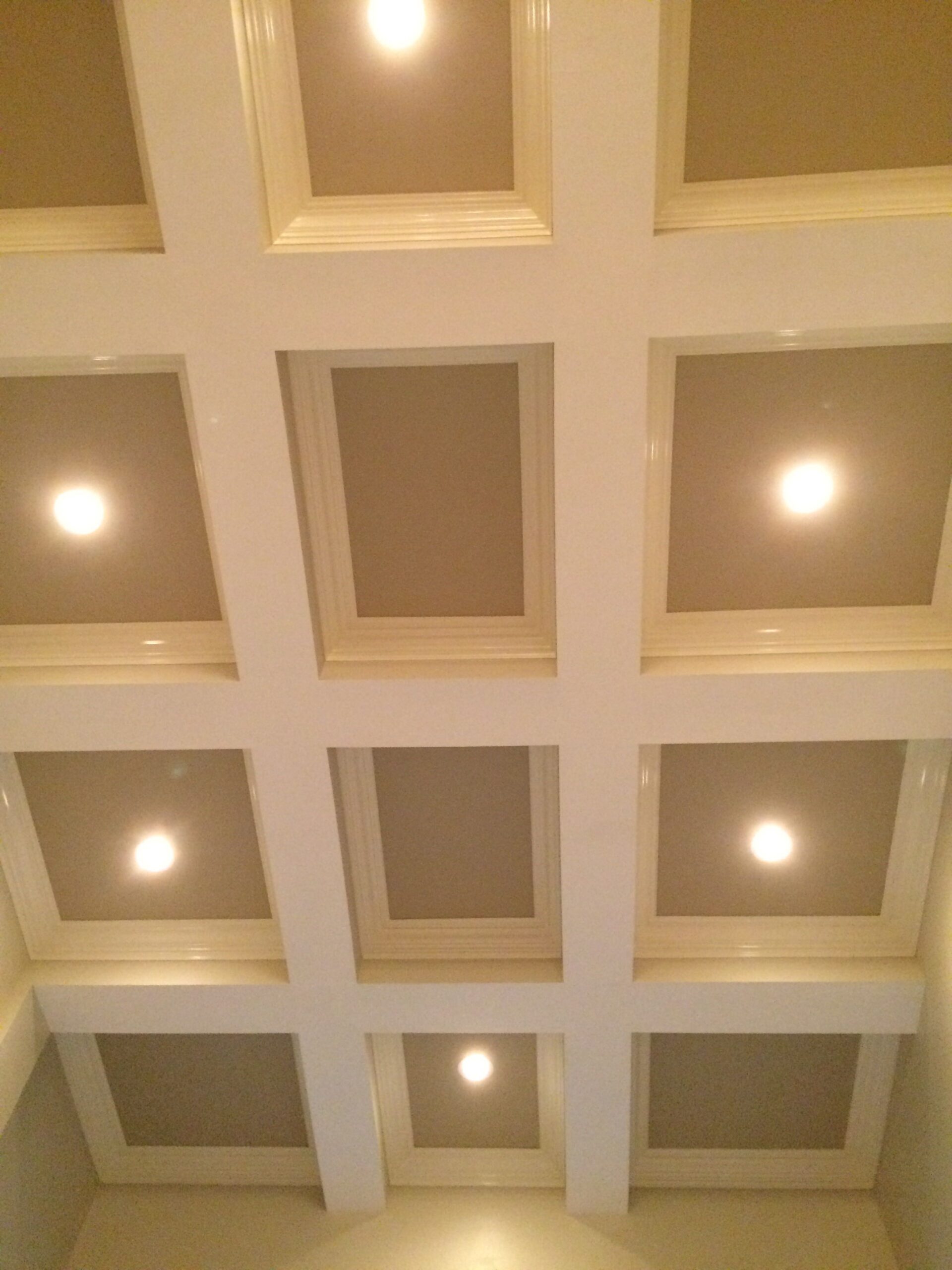 Painting crown molding to give your interior the distinction and refinement it deserves is not an easy job. To help you out, here are some tips on how to paint crown molding from our professional painters.
Painting crown molding to give your interior the distinction and refinement it deserves is not an easy job. To help you out, here are some tips on how to paint crown molding from our professional painters.
Select the right sheen and color.
When it comes to choosing the right paint sheen for crown molding, flat paint doesn’t have the same kind of kick as high-gloss paint. Additionally, you can go for a darker, a contrasting, an analogue or a complementary shade, but remember to stay away from very dark or bold colors, as they’ll attract too much attention to the molding.
Choose brushes carefully.
The best brushes for painting crown molding are the angled sash varnish or enamel brushes with flagged tips and tapered edges. Unlike regular brushes, these brushes hold more paint, facilitate paint application and leave a smooth finish with less brush strokes. What’s more, angled sash brushes are ideal for detail work because they allow you to trace sharper edges, making it easier for you to paint next to walls and ceilings.
Prepare the crown molding for painting.
If there are any cracks, nail holes or dents in your molding, use a high-quality wood filler to make the necessary repairs. As soon as the filler is dry, sand the entire crown molding, working in small sections. Run your hand over the surface to find all the imperfections you may fail to observe. Since even the smallest scratches, dents and gouges will show through in the finish coat, continue to sand the surface until it’s clear of defects. Then, wipe it with a damp rag. If a gloss finish was previously applied, it’s important to degloss the surface for the paint to adhere properly to it. For this, sand the surface lightly with fine-grit sandpaper and apply a deglosser, such as a TST solution. If there are any imperfections in the joint between the crown molding and the wall or the ceiling, prime the molding first, and then apply caulk, smoothing it out with your fingers to get a perfect finish.
Use a high-quality primer.
For the best results, it’s advisable to apply a high-quality wood primer that also seals the surface. Apply the product with long, even strokes. When you begin a new stroke, brush towards the last stroke applied. Complete each section with a light finishing stroke.
Paint your crown molding.
The final step you need to take to paint crown molding is to apply the paint. After the primer has dried thoroughly, paint the molding following the same technique described above.
Here are a few more valuable tips you may find useful:
- First, cut in the ceiling and roll it; then paint crown molding; after the molding has dried completely, cut in each wall and roll it.
- If you’re painting the crown molding a light color, apply two coats of paint to ensure good coverage.
- Always allow each coat to dry for the time frame specified on the product label.
To paint molding, you need to work overhead, which can be quite difficult. However, it’s well worth the effort knowing that you’ll be able to enjoy an interior beautifully appointed with perfectly painted crown molding.
At Performance Painting, we hope that the above tips will make painting your molding easier. If you’ve already started your project, but you find it too difficult to bring it to a successful conclusion, we’re ready to dispatch our team of outstanding painters who can professionally handle any painting project, small or large. To find out what we can do for you, give us a call today at (904)-641-4800.






